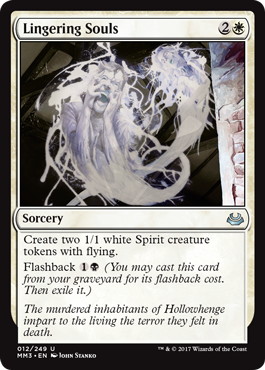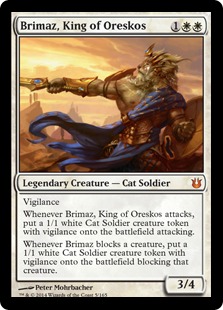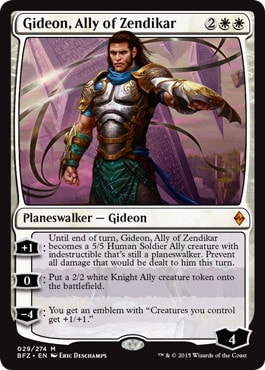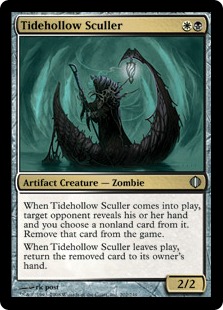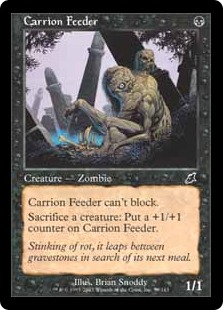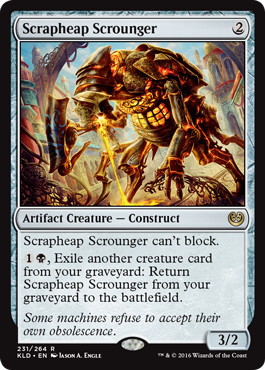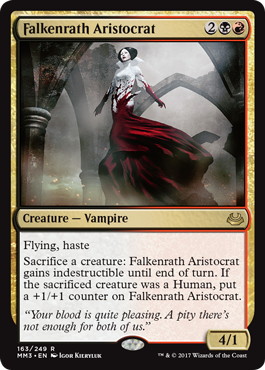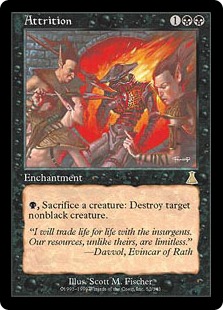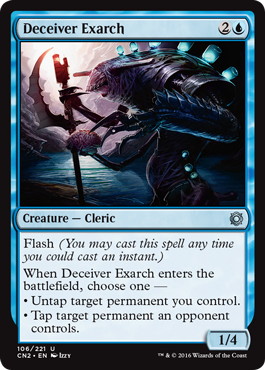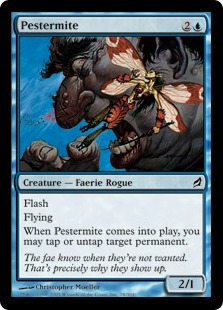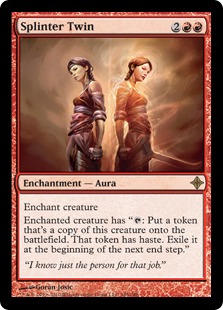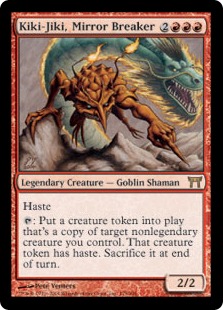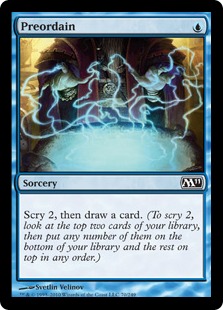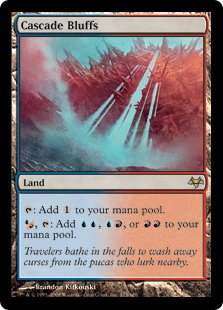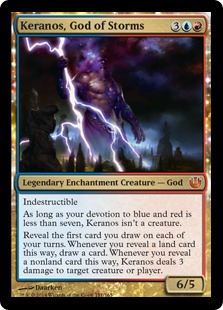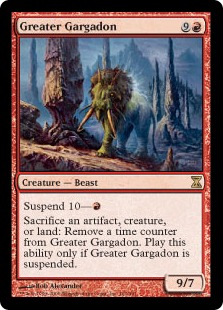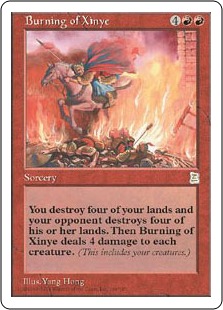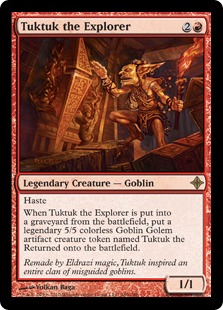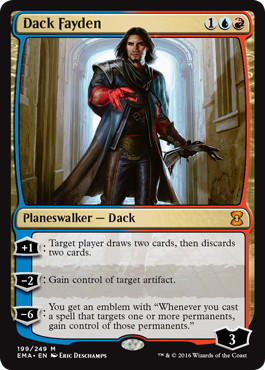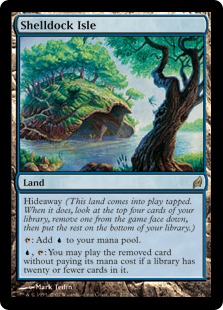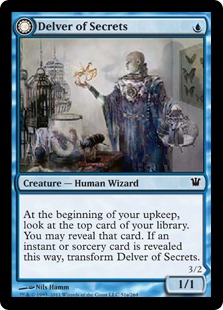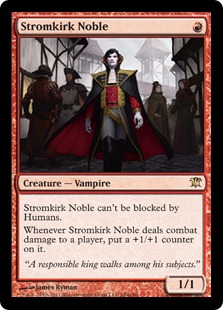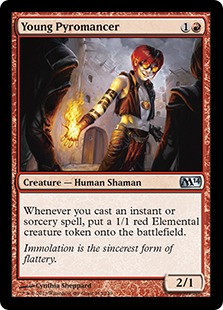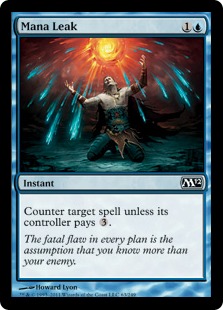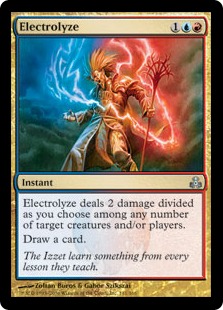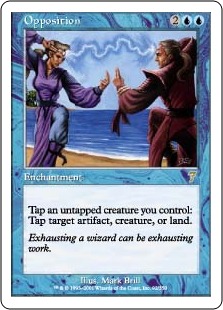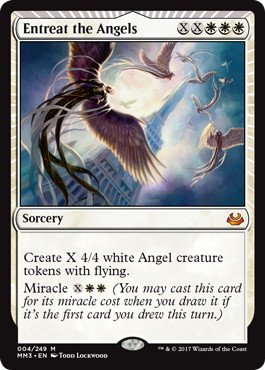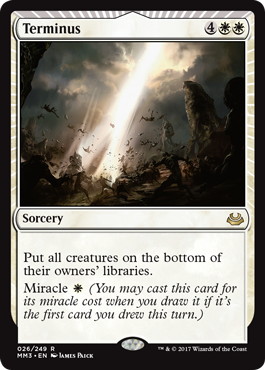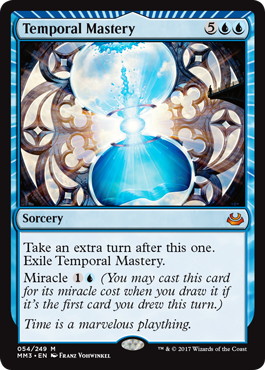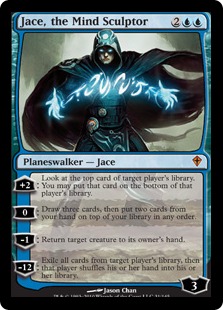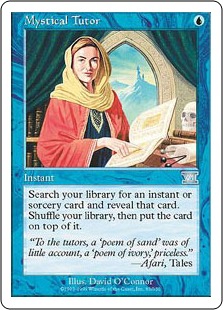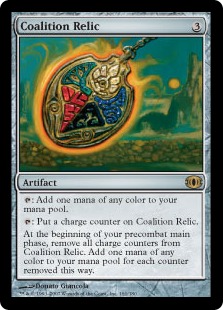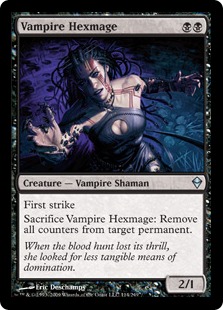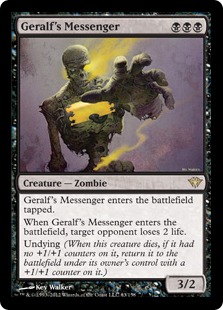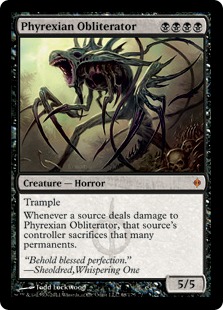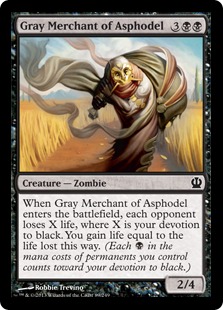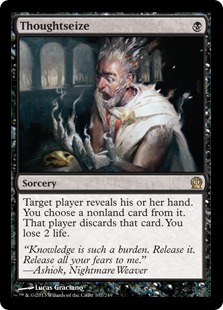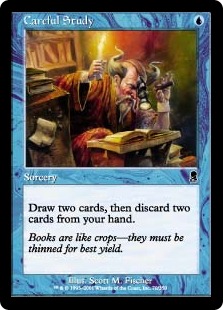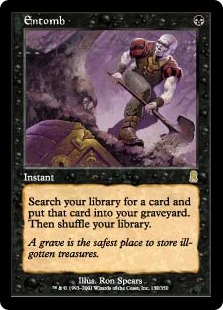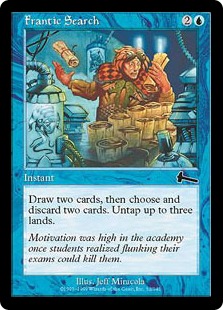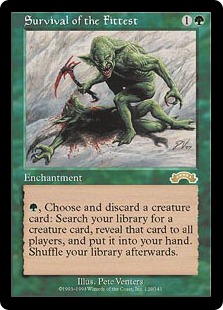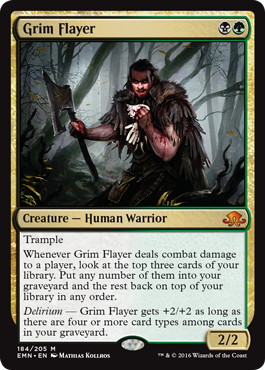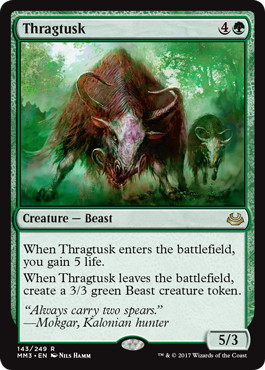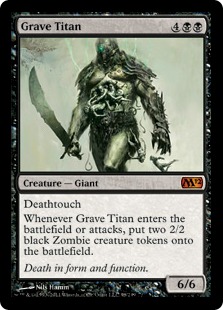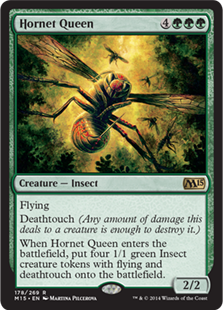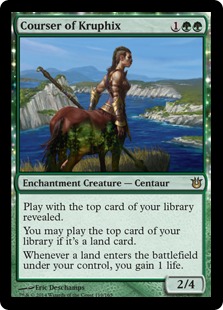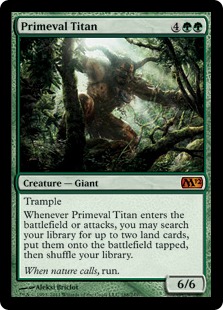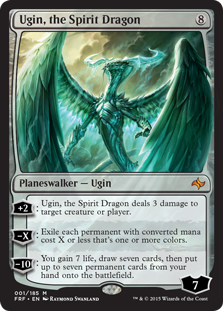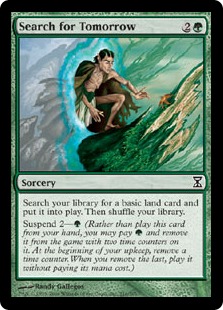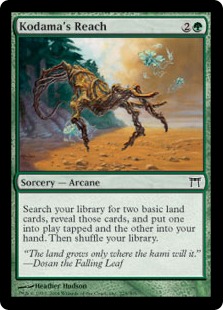Presentation
One of the most popular player created formats for Limited is Cube Drafting. Similar in structure to Draft, players will instead use a collection of pre-selected cards instead of random boosters to draft from.
Cube Draft encompasses many of the most enjoyable aspects of Magic, combining elements of both Constructed and Limited play, trading, and playing the game with friends.
To prepare for this format, a player (or, if you prefer, your entire play group) prepares a “cube” – a specifically selected set of at least 360 different cards (8 players X 3 boosters of 15 cards). Many cubes contain upwards of 720 cards to provide more variety among drafts. Personally, I think 720 cards decrease too much the power level and 360 makes combo deck too perfect and great, especially when you draft the entire cube with 8 players. I prefer a cube of 400 cards.
Cube Draft is also a popular format on Magic Online. It was also one of the formats played at the 2007 Magic Invitational. The 2012 Players Championship also adopted Cube Draft as one of their played formats.
The Different Ways to Draft Cube
Once the cube has been built, you can use it for any draft format. The most popular option is to build makeshift “booster packs” out of 15 randomly selected cards from the cube and then run a regular Booster Draft. You can use this format for 6 or 8 players. If you are 6, the best is to make a team booster draft.
Team Draft
Players (Team A and Team B) will be seat like this for the draft:

Players can help each other during deckbuilding and the games.
or
2) Players play against 3 opponents for a best of 9 match.
But if you are less than 6 players, you can also use your cube for many other kinds of draft format.
Rochester Draft (4 to 8 players)
Each player has 3 packs of 15 cards.
For purpose of an easy explanation, assume you have 8 players.
Player#1 (randomly chosen) starts by opening his/her first pack. The cards in the pack are laid face-up on the table. Player#1 picks a card, followed by Player#2, and so on up to the Player#8. Then player#8 takes a second card from the pack, then Player#7 etc. until the booster is empty. Now Player#2 opens his first pack. The process repeats with Player#2 having the first pick.
After Player#8’s first pack is complete, Player#8 opens his second pack. This time, pick order is the opposite of the last 8 packs. This continues until player#1 finishes with his second pack, in which case pack opening/pick order reverses again (the same as it was in the first pack).
Winston Draft (2 Players)
Winston Draft is a format that forces players to choose between variable stacks of cards.
Winston Draft is a two-player draft played with a total of six boosters which are shuffled together with the contents unknown, giving a card pool of 90 cards. The cards are placed as a stack called the main stack.
The top three cards are placed on the table face down. The starting player (decided by dice roll) may look at the first pile. If he or she chooses to take it, the pile is replaced with the top card of the stack.

If he doesn’t, the top card is added to the pile, creating a two-card pile. If the player did not take the pile, he repeats the process for the second pile, and again for the third pile if the second pile was not taken. If the player does not take the third pile either, he or she must take the top card of the main stack without looking at it.
Both players take turns for this process until all cards are used up. The player who went second in the draft may chose who starts in the match.
Solomon Draft (2 Players)
Each player needs three boosters containing 15 cards. All six packs are shuffled together, creating a combined pool of 90 cards. Decide who will be “Player A” and who will be “Player B” through a random method. Player A gets to draft first, while Player B gets to choose whether he or she wants to play first during the games.
To draft, Player A flips over the top eight cards of the deck and then divides them into two piles. They can be divided evenly into two piles of four cards, or disproportionately into piles of five and three, six and two, seven and one.

Once Player A has split the cards, Player B picks one of those piles and adds it to his or her drafted cards. The other pile goes to Player A. The process is then repeated, this time with Player B separating the top eight cards from the deck into two piles and Player A selecting a pile. The process continues, alternating between Player A and Player B splitting the piles, until all the cards have been drafted. (The last will have ten cards rather than eight.)
Solomon Draft (4 Players)
A variation on Solomon Draft can be played with four players. Instead of putting all product together, instead each booster is used separately.
The player who opens the booster must make four piles of equal strength (16 card boosters). Then the players in a previously established turn order take a pile each, with the player who opened the booster getting the last pick (the remaining pile after the other three players had their choice). Players open boosters in turns until the product is used up.
Auction Draft (4 Players)
For this game, you will need three 15-card booster packs (45 cards) for each player. The four players will sit in a circle with their positions chosen at random. Each player will receive 200 coins or fake money for which they may bid on cards (they can just use a paper and a pen to write down how much each player has). Players can’t have a card if they don’t pay at least 1 coin. If a card has no bids, it is removed from the draft.
To begin the draft, player #1 will open a booster pack and put one card out on the table so everyone can see it. Player #2 can bid on the card, Player#3 can make an equal or bigger bid, Player#4 too, then player#1. Players can’t make more than one bid for a card and the last bid is winning the card. This mean, players have the last say on all the card they open.

Player#1 repeats the process for every card from his first booster. Then player#2, #3 then #4 do the same. Then, Player #4 repeat the process a second time in a row, but player bid order change and go on the right of player 4 (So bid order of player #3, #2, #1 then #4).
When we go back to player#1 again, he opens his 3rd booster and players make bid in the original order. (So, bid order of player #2, #3, #4 then #1).
When Players are out of coins, they can’t bid on the cards from the draft anymore.
Pile Rochester (4 Players)
For this kind of draft, you need 200 cards from your cube. Players make 5 piles of 30 cards and 1 of 50 cards called random pile. The top card of each of the 5 small piles is reveal.
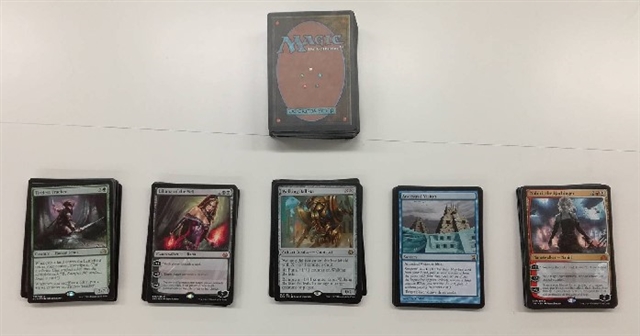
Players choose at random who is starting the draft. Player#1 can choose one of the 5 revealed cards. If he does, he reveals the top card of the pile after. The player has another option. He can look at the top card of the random pile, pick the card or put it on bottom and take the next one. Cards from random pile stay face down and are not revealed to other players. After picking from therandom pile, players must pick from the normall piles twice before having access to the random pile again.

Players are drafting the entire pool of 200 cards this way.
Cascade Draft
The whole cube is used. As pile Rochester, 5 face down piles with the top cards revealed. About 10% of the cube is used for a “random” pile.
Players choose at random who is starting the draft. Player #1 can choose one of the 5 reveal cards. When a player pick a card from one of the piles, he flips the new top card, and decide into which pile to cascade. He will get to pick and keep the first card that shares a color with the card he took from the top of the pile. Every card that’s revealed during cascades is added to the random pile afterwards. When the pile gets too big, simply add part of it to the regular cascade piles.
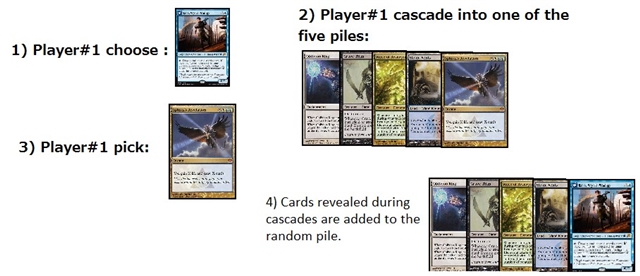
If player#1 cascades into colorless cards and hit a land with the cascade, he rolls a dice: Even, he keeps the land. Odd, he cascades into the random pile, but this time according to the mana cost of the original card he took from the pile (roll a Dice6 to determine the mana cost if he started with a land card).

The draft stop when each player get 45 different picks.
My actual Cube List

Click to enlarge.
Cube List can also be watch here : http://www.cubetutor.com/visualspoiler/3952
Example Archetypes
If you’ve never drafted cube before, it will maybe be hard for you to choose the right cards without the knowledge of what to go for. This is the list of the main archetypes you can draft in cube and some of the main cards for each.
White Black midrange:
Red Black sacrifice:
Blue Red Twin:
Blue Red Reset:
Blue Red Aggro:
Blue White Miracle:
Mono Black Devotion:
Blue Black Reanimator:
Green Black Survival:
Green Ramp:
I hope you enjoyed this article and hope you will try to play some cube using some of the different ways to draft it I talked about.
Thank you,
Jeremy Dezani
Recommended Items
Share in Twitter
Share in Facebook




